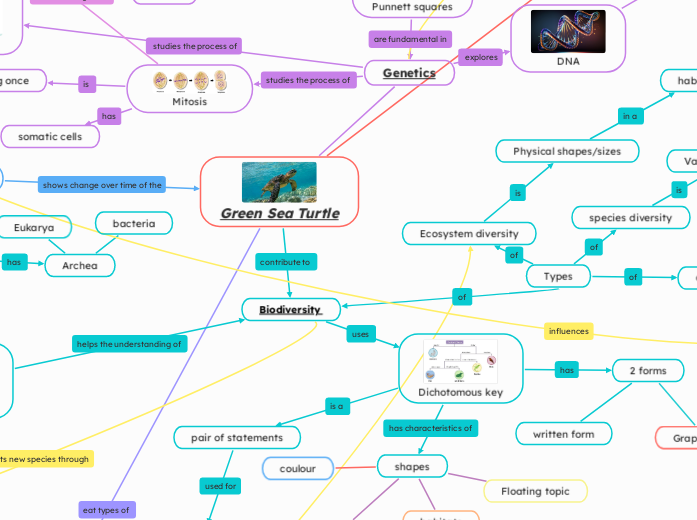Green Sea Turtle
animal systems
functions
ingestion
digestion
absorption
exertion
accessory organs
salivary glands
liver
gall baldder
pancreas
organ systems
Respitory system
mouth
throat
trachea
diaphragm
lungs
bronchioles
nose
larynx
bronchi
ATP
Immune system
Genetics
Punnett squares
Dihybrid crosses
Genotypes
allelles
dominant
recessive
Homozygous
heterozygous
phenotypes
Visual
Meiosis
meiotic division
Prophase II
Anaphase II
telophase II
metaphase II
prophase I
Telophase I
crossing over
anaphaseI
Metaphase I
diploid
Haploid
4 daughter cells
2 daughter cells
Gametes cells
dividing twice
Mitosis
dividing once
somatic cells
DNA
Structure
Chromatins
chromosomes
Plants
reproduction
secxual
asexual
1 plant
positive traits
germination
structure
male
pollen grains
female
sticky surfaces
kingdom plantae
eukaryotic
tropism
phototropism
hydrotropism
thigmotropism
geotropism
thermotropism
leaves
cells
epidermal
palisade
photosynthesis
light
energy
stems
transportation
nutrients
xylem
roots
taproot
fibrous root
root hair
lateral root
minerals
photosynthates
water
phloem
herbaceous
woody
Evolution
fossils
comparative anatomy
analogous features
vestigial features
adaptation
organisms fittness
Biogeography
migration
genetic diversity
point mutation
substitution
deletion
Insertion
mutations
DNA
Harmful
beneficial
natural selection
extinction
neutral
Biodiversity
Taxonomy
Domain
Archea
bacteria
Eukarya
Kingdom
anamalia
Types
Ecosystem diversity
Physical shapes/sizes
habitat
species diversity
Variety of species
Ecosystem
determines the health
Genetic Diversity
Different genes
In the same species
Dichotomous key
pair of statements
Identification
2 forms
written form
shapes
coulour
# of legs
habitats
Floating topic
Graphic form
Protista
plantae
Phylum
Fungi
circulatory system
heart
arteries
veins
capillaries
nervous system
digestive system
mouth
esophagus
stomach
Subtopic
small intestine
large intestine
anus
liver
pancreas
gallbladder
